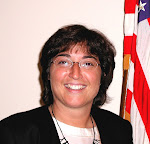




Tuesday, March 27, 2012 – Paramaribo
After a buffet breakfast “in the bar in the shopping arcade of the mall attached to the hotel (!)”, we were back in the large van for a city tour. There are numerous wooden buildings of unique architecture (many areas reminded us of Savannah and Charleston architecture) and a variety of ethnic groups all living together in harmony – African, Afro-Caribbean, Indians (from India), Dutch, Chinese (every grocery store is owned by a Chinese!), Indonesians (also a colony of the Dutch), Jews and Maroons (descendants of African slaves).
Giovanni, Rachel, Zuwesa, our guides, and our driver Randy, drove us along the most prominent historic locations in the city center: Independence Plaza, the Presidential Palace, Fort Zeelandia, and the parliament building (where no one is allowed to enter except on official business!). They have a President with a democratic republic and 51 Parliamentarians in their National Assembly. The Presidential Palace is only used for welcoming foreign guests and official receptions. The balcony is historic, from which on November 25, 1975, the Dutch flag was lowered and the Surinamese flag hoisted for the first time.
Fort Zeelandia was a small wooden stronghold by the French in 1644. The English fortified it in 1651 and then the Dutch came 16 years later. It now houses the Suriname museum. The city center is a UNESCO World Heritage site, since 2002, and a junction of several cultures including temples for Hindus, Turks, Muslims, Anglicans, Catholics and others. The mosque and synagogue stand next to each other; the floor of the synagogue is covered with sand: #1 to remind them of the trek from Egypt across the desert; #2 during the inquisition, the people that remained Jews but said they were Christians had to keep their Jewish meetings secret to they covered the floor with sand to muffle their footsteps and erase them quickly and #3 for fire prevention.
The Suriname River is a muddy mix, just like the Amazon. Giovanni said the Amazon’s waters flow in to it and, therefore, the ugly brown muddy color. We visited the Cathedral – the largest wooden church in the Western hemisphere! It is also used as a theatre for the folkmusic school across the street. The interior, made of snakewood, was stunning - so simple, yet very warm and welcoming in design.
We drove past the US Embassy, which is being moved from the city centre to the outskirts of town and then past many wooden homes in the “Freeman’s Ground” area - -where slaves were granted a home in 1863 but no papers proving they owned the home. Even today, if any renovations are made to the home, someone could come along and claim the home was their ‘great-grandfather’s home’ and you would be forced to move since you had no papers to claim it was yours! The homes were wooden, simple one and two-storey and attractive – yes, they were in need of repair but the entire area again had such a nice warm and welcoming feeling. There are approx. 800,000 inhabitants in the country. The indigenous Amerindian people dealt with the Dutch dominance. Ever since 1650, the colonial rulers forced Africans into slavery and sent them to Suriname. Their descendants are known as Creoles. The Maroons are descendants of runaway slaves. After the abolition of slavery in 1863, contract laborers from India, Indonesia and China came to work on the plantations. During the colonial period, Jews, Lebanese and Europeans immigrated to Suriname and then Haitians, Brazilians, Chinese and Guyanese decided to make Suriname their home. It is indeed a true melting pot country. The official language is Dutch but they recognize 20 other languages.
The monthly salary is a minimum of $200 (shop clerks).
As a group, we drove over the large Jules Albert Wijdenbosch bridge where they hold a walk every two years – the Bigi Broki Waka. We hired Larry through the hotel front desk to drive us back over the bridge to visit Fort Nieuw Amsterdam, at the confluence of the two majestic rivers: Suriname and Commewijne. The fort was a prison and is now an educational venue for turtles and history. The church was set in a small mote with large lily pads around it and there were seats at the river’s edge for relaxing. We walked the main streets in town, past several casinos, looking for souvenir shops and a place to eat. Most of the stores have no sign outside but I did find a handicraft shop with some wooden products. They are not overly interested in selling their products. The store hours are short and the products scarce.
